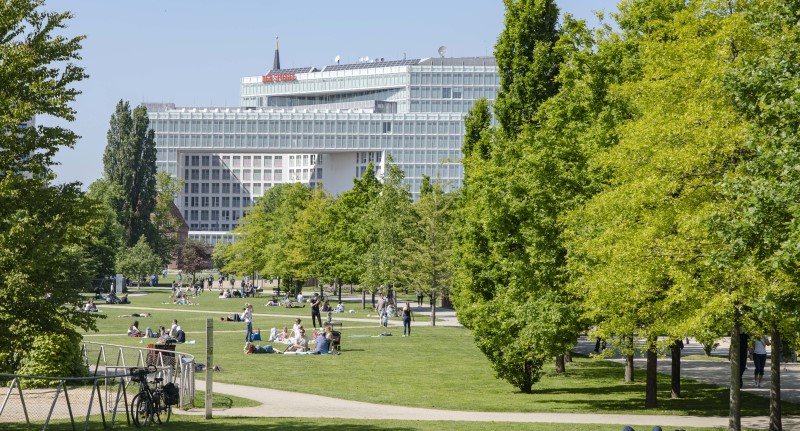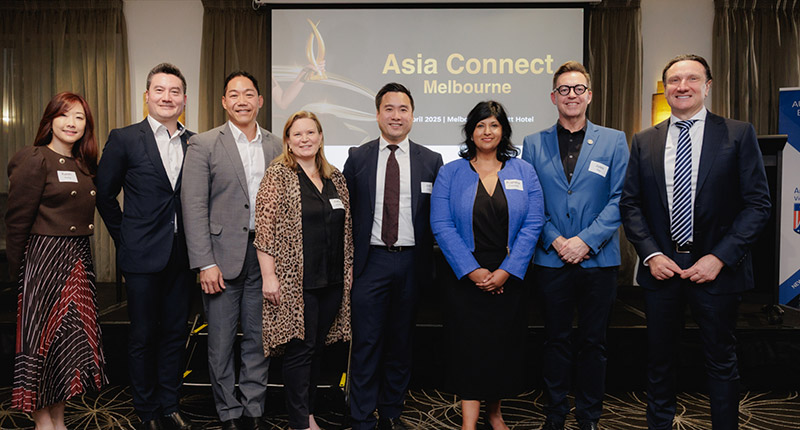- HafenCity in Hamburg is Europe’s largest inner-city urban development project.
- The main attraction for families to HafenCity is that they are delivering apartments that are suitable.
- Spacious parks and squares are linked by a diverse network of green connections and promenades.
Urban regeneration and the practice of repurposing underutilised spaces in key locations can breathe new life into a city and play an important role in the delivery of much needed housing in inner areas.
HafenCity in Hamburg is Europe’s largest inner-city urban development project that is successfully transforming 157 hectares of former port and industrial land into a mixed-use downtown area packed with character and a broad range of people that now call the locale home.

The redevelopment has been driven by the City of Hamburg, with a masterplan approved back in 2000 that provided a framework for a variety of uses and the establishment of ten distinct ‘quarters’ within the redevelopment area. A reviewed masterplan was then adopted in 2010 to reflect the need for creating higher urban density.
The decades long project is due for completion within the next ten years. Over the life span of the project, private industry has played an important role in partnering with government to deliver on the overall vision.
Currently there are approximately 4,000 households equating to around 8,000 residents within the redevelopment area and that is set to double on completion of the development to 8,000 apartments and approximately 15,000 people living in HafenCity.
That number is accompanied by around 45,000 people who will ultimately be working in the area.
Dr Matthias Borscheid, Senior Project Manager – Social Urban Development, Participation & Research at the HafenCity Hamburg GmbH says that one of the main aims of the HafenCity project was to increase the population in the inner city and increase the vibrancy and economic diversity of the area.
Hamburg has faced similar challenges to inner city Perth, including a lack of vibrancy due to a dearth of residents living in the city. The nighttime economy struggled as workers left the city to go home in the evening, leading to empty streets and struggling small businesses and hospitality venues.
Dr Borscheid said the redevelopment needed to address issues such as planning amenities and social infrastructure early in the process to attract residents to live, work and play in the City.
“We talk about the concept of encounter capacity,” Dr Borscheid said. “How do you create a city where people meet in the parks and streets and deliver the infrastructure that can support that. You need to consider housing and social infrastructure hand in hand.”
The masterplan for HafenCity is based around the existing topography, with the overall footprint shaped by the basins of the harbour.
“That was the template for the development,” Dr Borscheid said. “The masterplan provided a vision to then develop HafenCity in incremental steps. We have learned as the development has progressed and adapted accordingly.”
Factors such as changes in public policy, technology and society more generally have all impacted on the evolution and planning for HafenCity.
Delivering affordable housing
Building cooperatives and joint building ventures have contributed to a diversity of affordable housing since the outset of the redevelopment. In 2011, a formal policy was implemented in the City of Hamburg for one third of new housing delivered to be social and affordable housing; one third provided for rental; and one third for private ownership.
This approach has led to a stronger mix of housing typologies within the redevelopment and a diversity of residents from singles and couples through to families and retirees.
“26% of HafenCity’s households are families,” Dr Borscheid said. “That is the fifth highest proportion of families of any other area in Hamburg, and that uptake from families was not anticipated in the beginning.
“We had initially planned for 400 childcare places and now we have a target of over 1,200 and that is probably still short of meeting the expected demand on completion of the development.”
Dr Borscheid said the main attraction for families to HafenCity is simply that they are delivering apartments that are suitable.
“If you have a high share of apartments that are suitable for family living, then that will be reflected in your population, considering a tight housing market in the city overall. People also find it appealing to live near the river and the quality of our urban spaces is high.”
While the expansive and well maintained green open spaces are an attractor for residents and visitors, these areas did not come without challenges.
“The authorities complained that it is too expensive to maintain such high-quality green spaces, but they are so important from a social and ecological perspective,” Dr Borscheid said.
These spaces also play a role in Hamburg’s ability to compete with other cities for creative workers and enterprises, who are a target for immigration given their importance to economic growth.
Unique neighbourhoods
The ten ‘quarters’ or neighbourhoods that make up HafenCity all have their own unique identity.
The ‘oldest’ quarter is Am Sandtorkai/ Dalmannkai in the northwest of HafenCity. The area is characterised by high density and formed around Hamburg’s oldest man-made harbour. The second quarter, Am Sandtopark/Grasbrook features a primary school and family apartments close to the green play spaces.
Brooktorkai/ Ericus is a business district surrounded by the UNESCO World Heritage Site Speicherstadt, which is the largest warehouse district in the world extending over 26 hectares and built on thousands of oak stilts between 1883 and the late 1920s.
The Strandkai or Beach Wharf quarter features high rise apartments and office buildings on the waterfront, while the Uberseequartier is set to be the most metropolitan and populated quarter, with more than 6,000 jobs created within the precinct and 1,000 apartments.

The Elbtorquartier is a central location within HafenCity and home to the HafenCity University with 2,500 students and a diversity of built form; and the Oberhafen quarter is the creative and cultural hub with a mix of creative industries and sports facilities.
Am Lohsepark is another family friendly residential district with the largest green area in HafenCity; Baakenhafen is a dockside urban village on both sides of the harbor basin featuring sustainable urban design and a high level of subsidised housing totalling 2,400 apartments, home to a broad mix of people including students, retirees and residents with high care needs.
Elbbrucken is set to emerge as HafenCity’s second urban centre after the Uberseequartier, bound by water on three sides and a large central plaza surrounded by high density business commercial buildings.
Extensive public open space is integral to bringing all these neighbourhoods together and providing connectivity for residents, workers and visitors.
There is around 28 hectares of public open space throughout HafenCity including parks, green areas, and 10 kilometres of promenades.
“The promenades are an important feature because they play a practical role in flood protection, but you can also walk through HafenCity almost without having to cross one street, so it is very pedestrian friendly,” Dr Borscheid said.
Grasbrook – a new district
A new district is now emerging on a brownfield site just across the river from HafenCity, also led by HafenCity Hamburg GmbH.
The Hamburg Ministry for Urban Development & Housing, with the HafenCity Hamburg GmbH, have held several international design competitions within HafenCity, and the most recent competition was for the redevelopment site at Grasbrook.
Swiss architectural firms Herzog & de Meuron and Vogt Landschaftsarchitekten collaborated on the successful design concepts for the urban configuration and public open space for the redevelopment.
Herzog & Meuron Studio Director Yasmin Kherad says, like the wider HafenCity redevelopment, the high-quality urban masterplan for Grasbrook has an emphasis on open public spaces that will serve as the basis for the subsequent development of the district.
The Grasbrook redevelopment will eventually be home to 6,000 people (3,000 residential units/apartments) and 16,000 jobs.

“Spacious parks and squares are linked by a diverse network of green connections and promenades – almost like a green infrastructure – which forms a highly livable, ecologically valuable urban landscape,” Ms Kherad said.
“Grasbrook gives Hamburg the opportunity to take the leap across the Elbe and integrate the currently isolated Elbe islands south of the city center into the vital urban fabric, while at the same time linking existing neighborhoods, such as Veddel to the east, into the urban context,” Ms Kherad said.
The aim is for Grasbrook to become a model for sustainable development, promoting a walkable city layout with diverse housing typologies, generous outdoor spaces and a strong connection to the water.
“Two factors are essential for sustainable neighborhood development, on the one hand, a simple and efficient transport infrastructure that leaves behind the previous focus on motorized private transportation, while remaining open to various mobility systems and being flexible enough to accommodate future developments,” Ms Kherad said.
“On the other hand, a diverse mix of uses that can be based on clear and robust yet flexible urban structures and sustainably innovative building typologies.
“A high-density, yet highly permeable neighborhood can offer a rich variety of semi-public and commercial uses, such as cafés, shopping, services, galleries, and co-working spaces, especially on street-level.
“While the Moldauhafen is primarily a place to live and work, the commercial buildings in the Hafentorquartier allow for vertical production, stacked commercial courtyards, robotic manufacturing, or even large-scale research and laboratory buildings to combine different working environments in a stimulating way.
“In combination with a range of housing typologies that allow for various ways of living, from subsidized housing to cooperatives to privately financed housing, Grasbrook aims to bring together all the previously separated functions of the modern era’s ‘regulated urbanism’ to create a truly urban and sustainable quarter.”
The people’s verdict
Both Dr Borscheid and Ms Kherad believe that the people of Hamburg have responded positively to the redevelopment in HafenCity and Grasbrook due to a range of factors, particularly effective community engagement from the early stages.
Dr Borscheid says there was strong community engagement in relation to placemaking and place marketing activities from the outset and there was also a big focus on ensuring that developers bidding for sites provided strong concepts that were in keeping with the vision of the masterplan.
For example, there are requirements that ground floor units throughout the entire development must be used for shops, restaurants, galleries, or social infrastructure that corresponds with the streetscape.
Ms Kherad says the Grasbrook design was based on careful evaluation in preparation for the design competition, the district is also meant to perpetuate Hamburg’s identity.
“There is a continuation of local Hamburg typologies and building traditions integrated into the scheme,” Ms Kherad said.
“The location in the center of the city along the waterfront is also highly desirable and perhaps most importantly, the continuous and widespread communication of information about the development of the area was part of the entire process.”
In closing, Dr Borscheid reinforces the importance of creating a liveable, modern city that is not just a showcase, but a real city for all.
~~
This story was originally published in The Urbanist magazine, an official publication of the Urban Development Institute of Australia (WA). It has been edited for republication by The Property Tribune.
The Property Tribune thanks the UDIA WA for the opportunity to republish the work, and share thought leadership in relation to urban development and community creation with our readers.
Read the original copy of The Urbanist by heading to UDIA WA’s website under the News tab.








